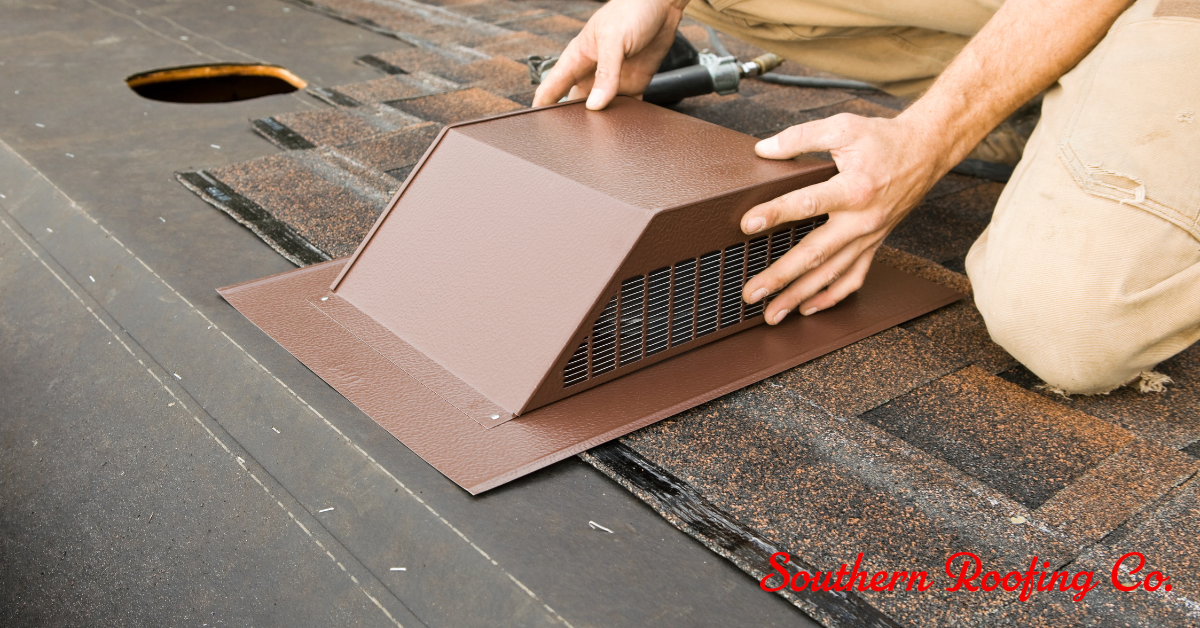
As the summer heat rolls in, homeowners throughout Middle Tennessee look for ways to stay cool and keep energy costs down. While air conditioners work overtime, there’s another key component in maintaining indoor comfort that often gets overlooked—roof and attic ventilation.
Proper ventilation plays a critical role in your home’s energy efficiency, indoor comfort, and roof longevity. In this blog, we’ll explain how ventilation works, why it matters in hot weather, and what you can do to ensure your home is prepared for the summer heat.
Why Ventilation Matters for Your Roof
Attic and roof ventilation refers to the system of air intake and exhaust that regulates temperature and moisture in your attic space. When it's functioning properly, it allows hot air to escape and fresh, cooler air to circulate.
Without it, trapped heat can cause:
- Increased cooling costs
- Deterioration of roofing materials
- Higher humidity levels
- Mold and mildew growth
- Shortened roof lifespan
The Science Behind Summer Heat and Your Attic
During hot summer days, your roof can absorb an immense amount of heat from the sun. That heat transfers into your attic, where temperatures can soar above 150°F if there is no adequate airflow. This heat buildup radiates downward into your living space, forcing your HVAC system to work harder and increasing your utility bills.
Proper ventilation helps:
- Regulate attic temperatures by exhausting hot air
- Reduce moisture that can accumulate from daily activities like cooking or showering
- Protect roofing materials by preventing heat and moisture damage
Benefits of Proper Roof Ventilation in Summer
1. Improved Energy Efficiency
When your attic is excessively hot, your air conditioner must work harder to cool your home. This leads to increased energy consumption and higher utility bills. Ventilation helps remove that heat and ease the load on your HVAC system.
2. Extended Roof Life
Excessive heat can cause shingles and other roofing materials to warp, crack, or age prematurely. Proper ventilation helps maintain consistent temperatures, which prolongs the lifespan of your roof—saving you from early roof repair or roof replacement.
3. Moisture and Mold Control
In humid areas like Middle Tennessee, moisture is a year-round concern. Inadequate airflow can allow condensation to build up in your attic, leading to mold, rot, and structural damage. Ventilation allows moisture to escape, preserving the health of your home.
4. Enhanced Indoor Comfort
By removing excess heat from your attic, you prevent it from seeping into your living areas. This makes your home more comfortable without having to constantly adjust the thermostat.
Signs Your Attic May Need Better Ventilation
As a professional roofing contractor, we often spot these common signs of poor attic ventilation during inspections:
- Extremely hot or stuffy attic air
- Uneven temperatures across rooms
- Mold or mildew in attic or ceiling corners
- Ice dams in winter (a sign of poor airflow year-round)
- Shingles that curl or blister
If you notice any of these issues, it’s time to schedule a roof inspection with a qualified roofing company.
Types of Roof Ventilation Systems
Effective attic ventilation usually includes both intake and exhaust components to allow for continuous airflow.
1. Ridge Vents
Installed along the peak of the roof, ridge vents are one of the most efficient and aesthetically pleasing ventilation options. They allow warm air to escape from the attic’s highest point.
2. Soffit Vents
Located under the eaves, soffit vents provide the necessary intake of cool, outside air. They work hand-in-hand with ridge vents for balanced airflow.
3. Gable Vents
Installed on the gable ends of the attic, these vents allow warm air to exit horizontally. They’re often used in combination with other systems.
4. Attic Fans
Powered or solar attic fans can help draw hot air out of the attic more aggressively, but they must be properly balanced with intake vents to be effective.
5. Turbine Vents
These wind-powered vents spin to create a vacuum that pulls hot air from the attic. While effective, they may be less efficient on still, windless days.
How a Professional Roofing Company Can Help
A licensed and experienced roofing contractor can assess your current ventilation setup and recommend improvements tailored to your roof structure, materials, and local climate conditions. At Southern Roofing Co., we understand the unique weather challenges in Middle Tennessee and tailor our recommendations accordingly.
In the hot and humid summers of Middle Tennessee, roof and attic ventilation isn’t just a nice-to-have—it’s a necessity. It plays a critical role in keeping your home comfortable, reducing energy costs, and protecting the health of your roofing system.
Whether you're planning a full roof replacement or just looking to improve your home's energy efficiency, don’t overlook the importance of proper ventilation. It's one of the smartest upgrades you can make to protect your investment and enjoy a cooler, more comfortable home this summer. In need of a roof replacement or repair? Contact us today!

